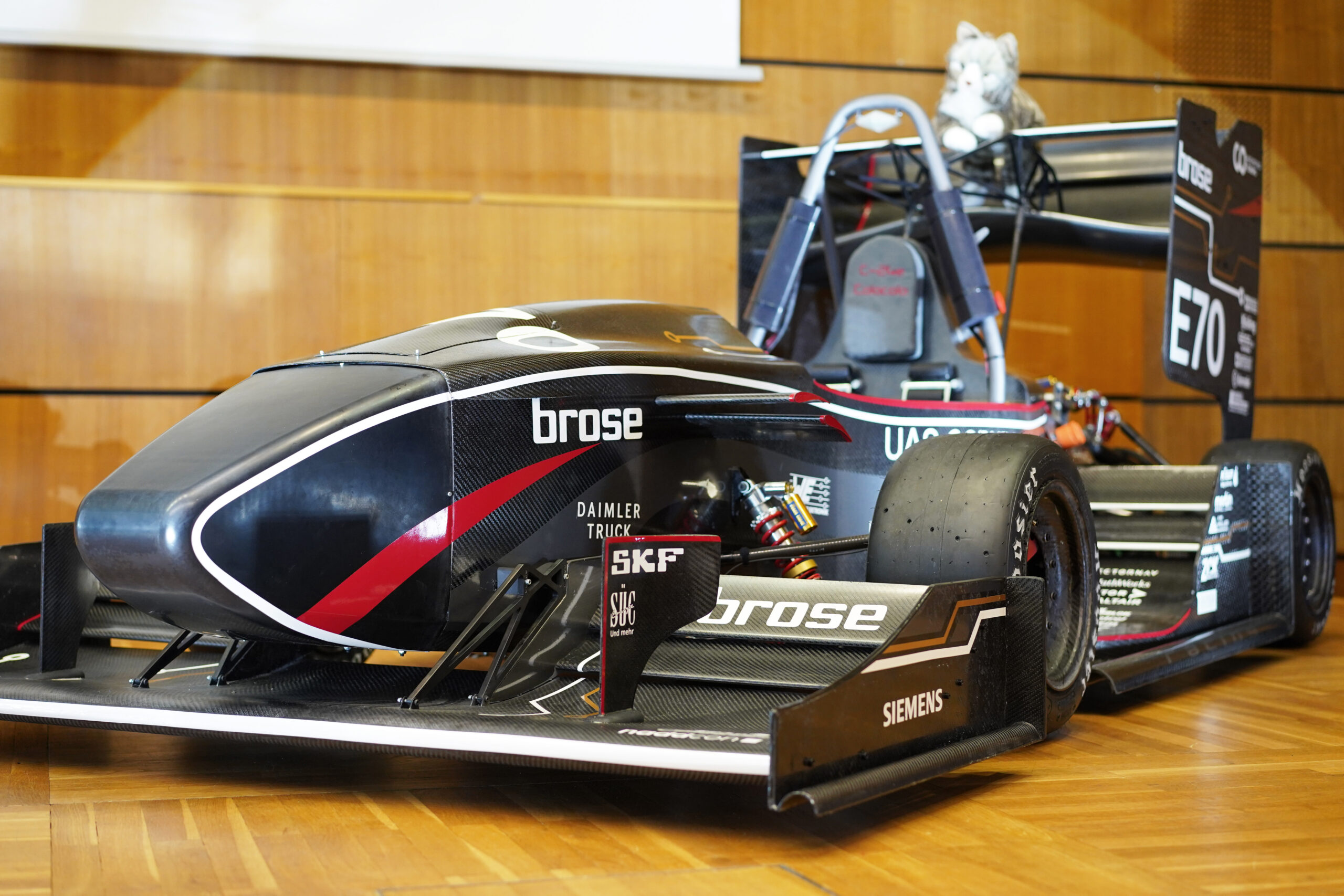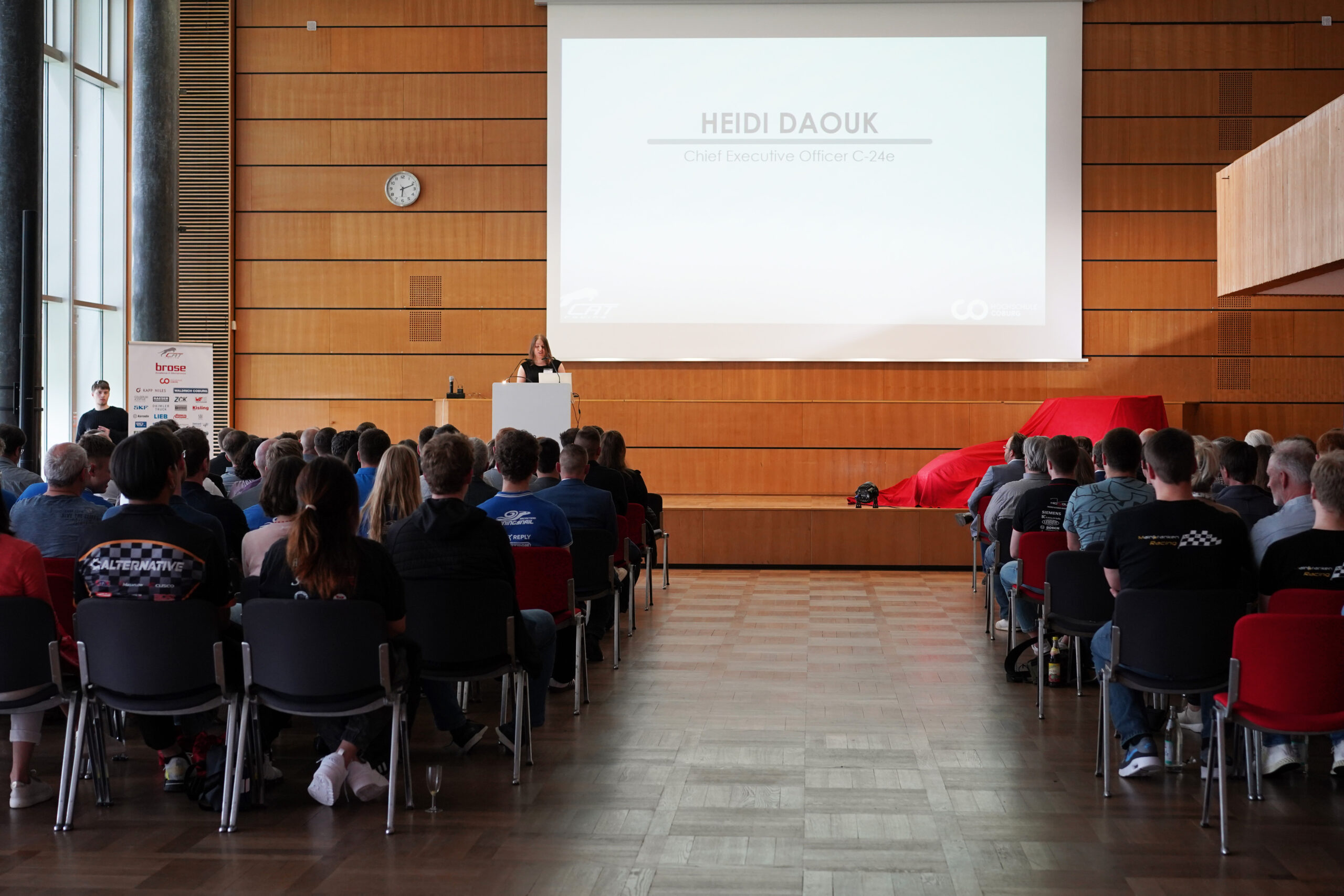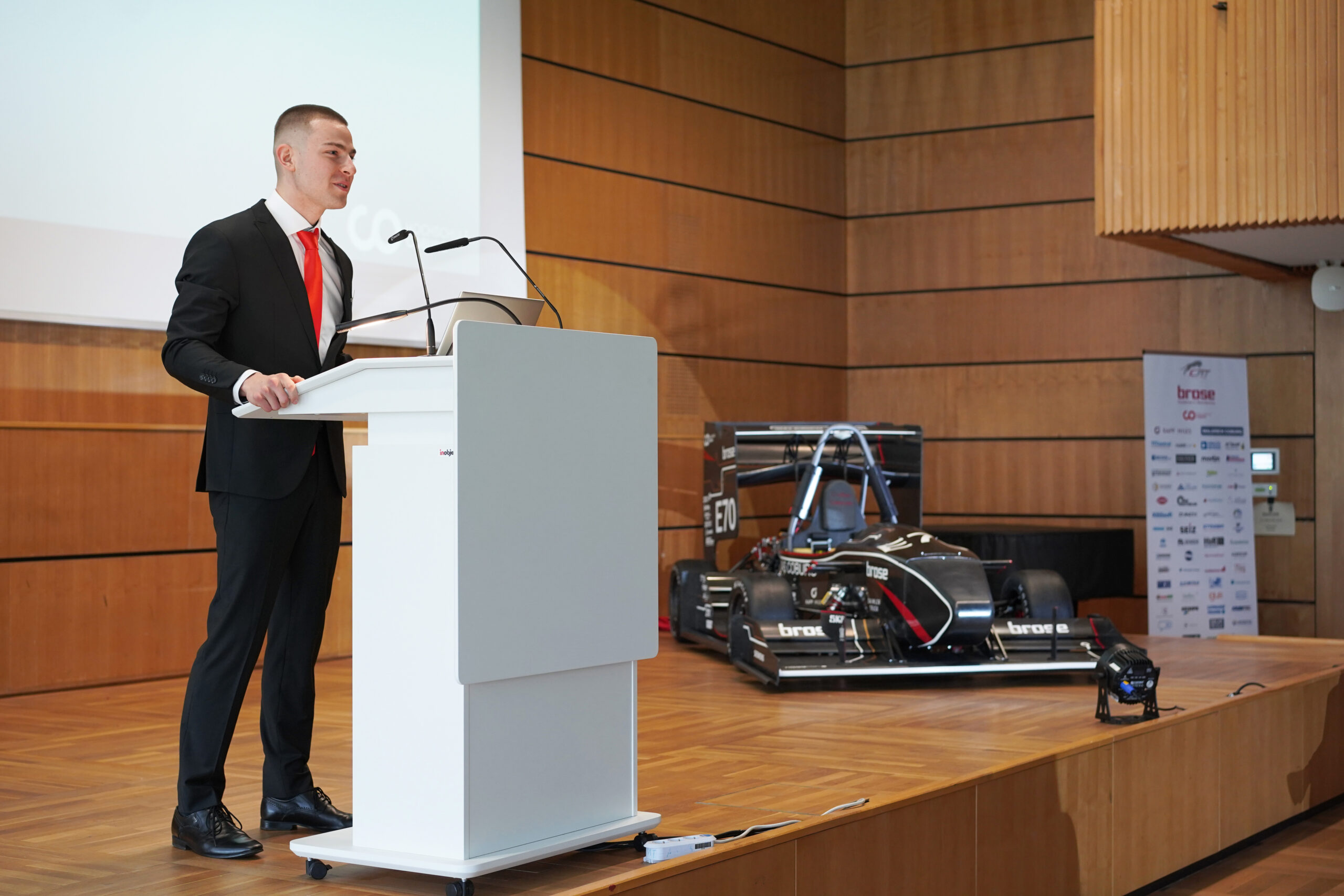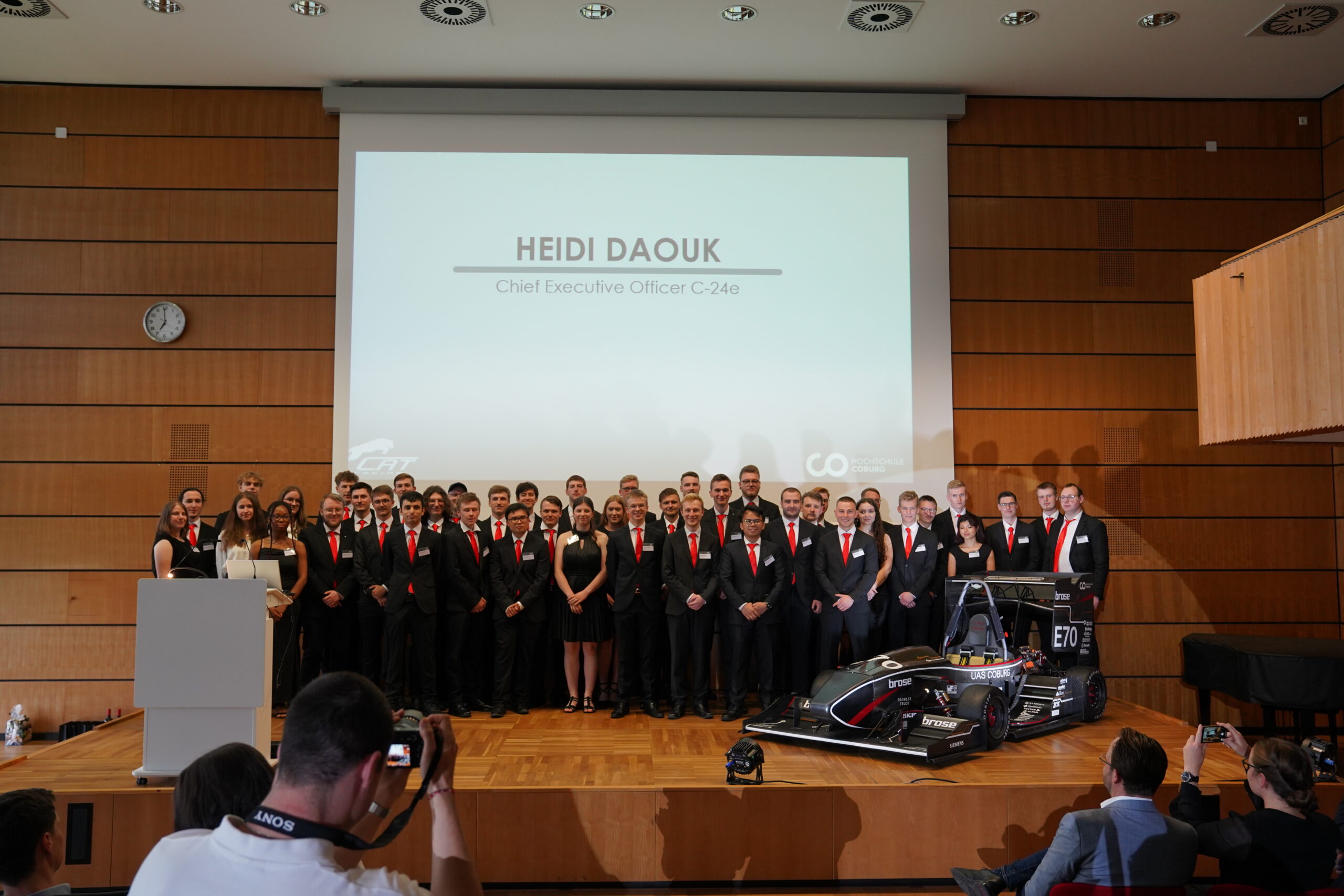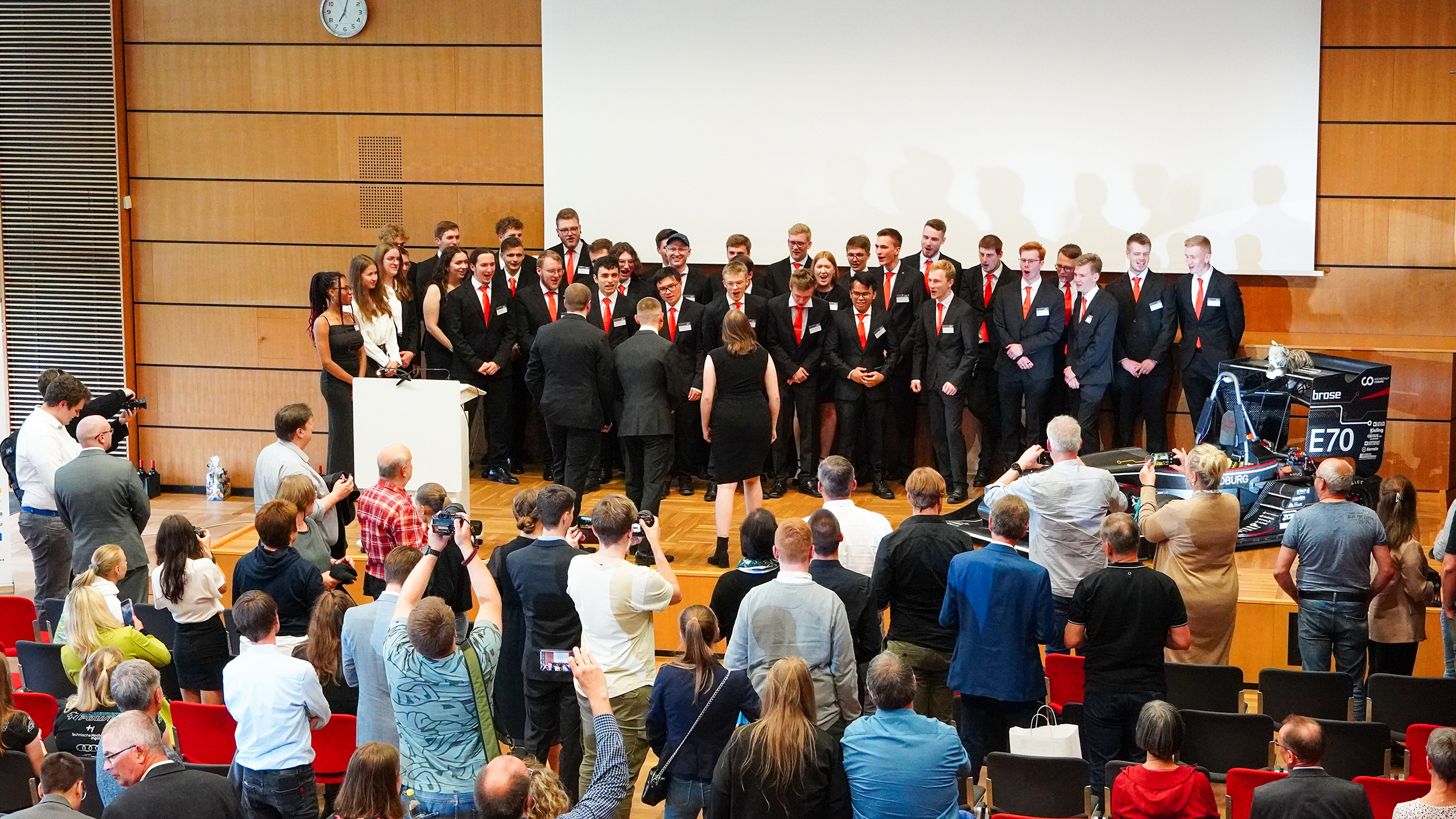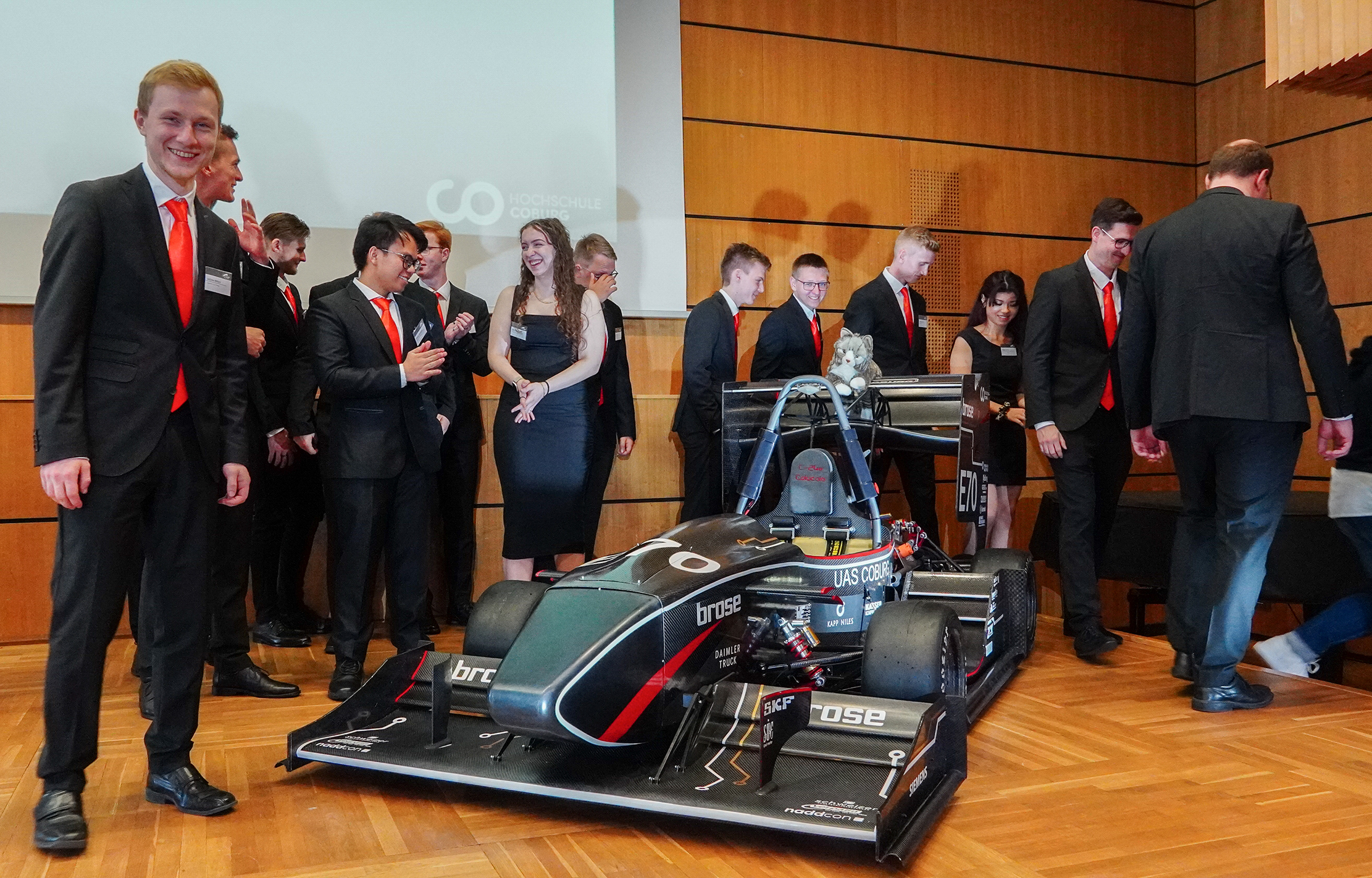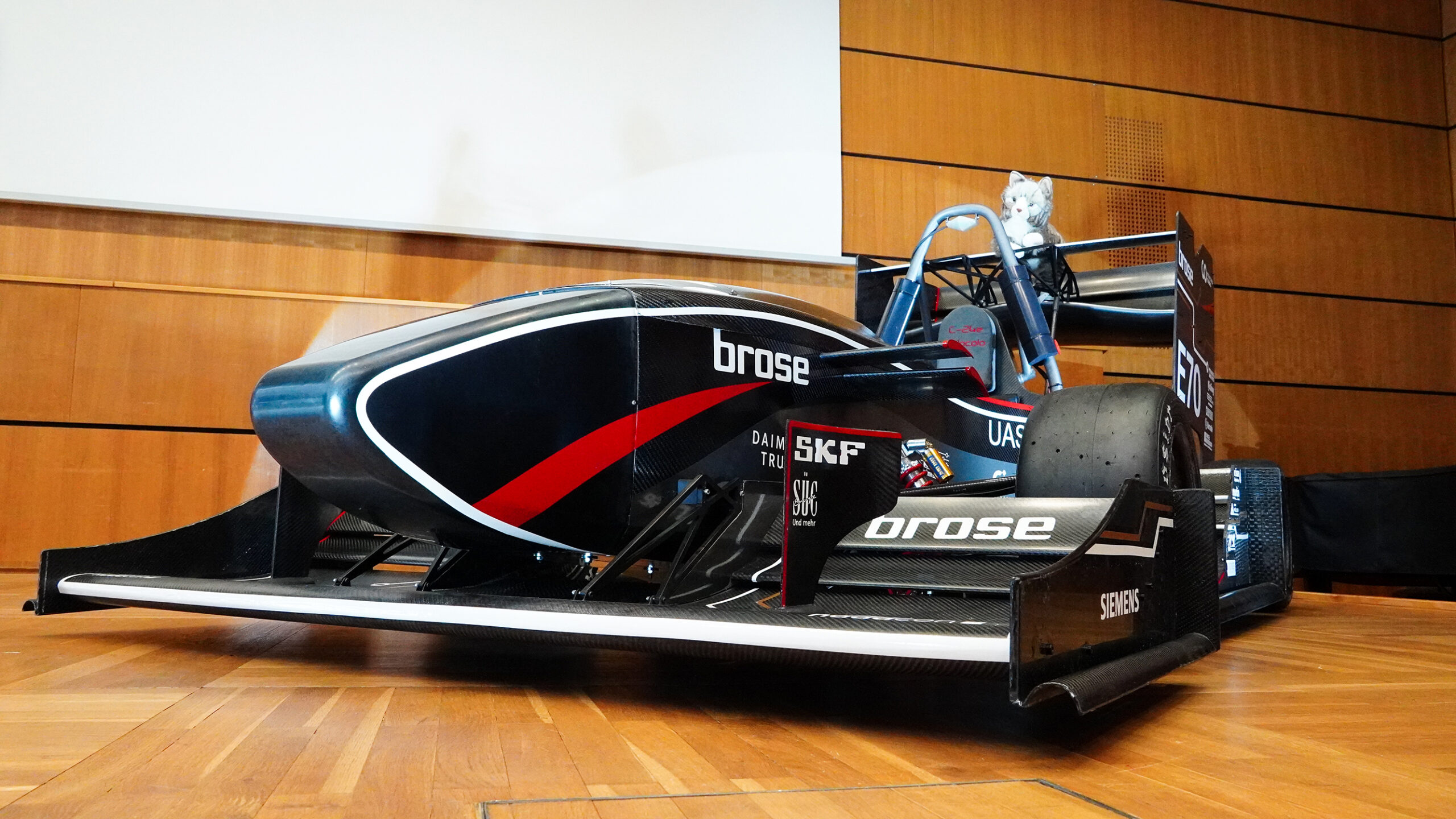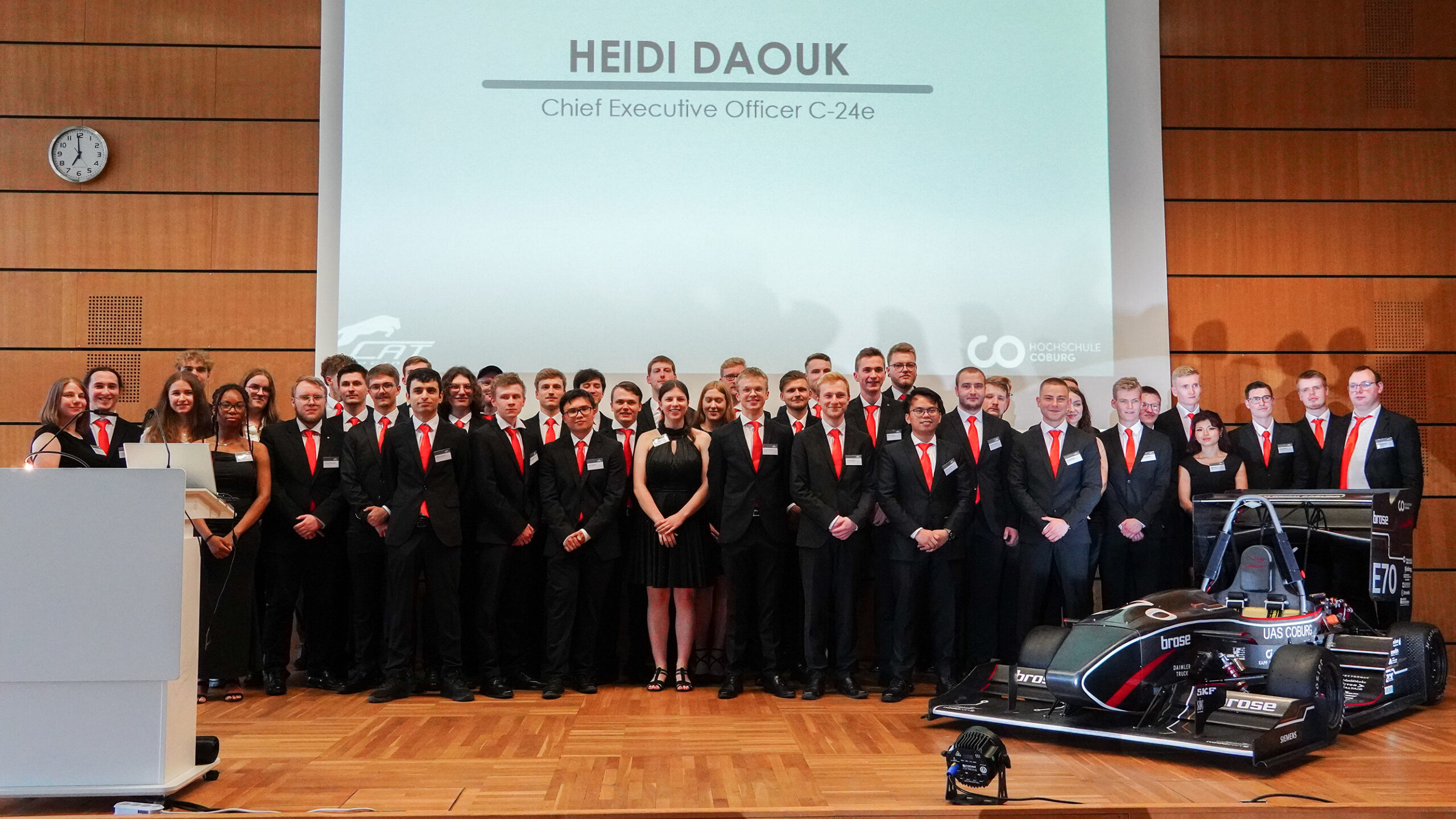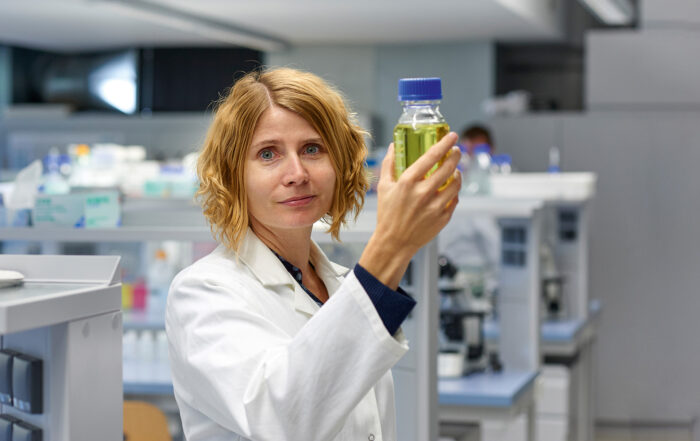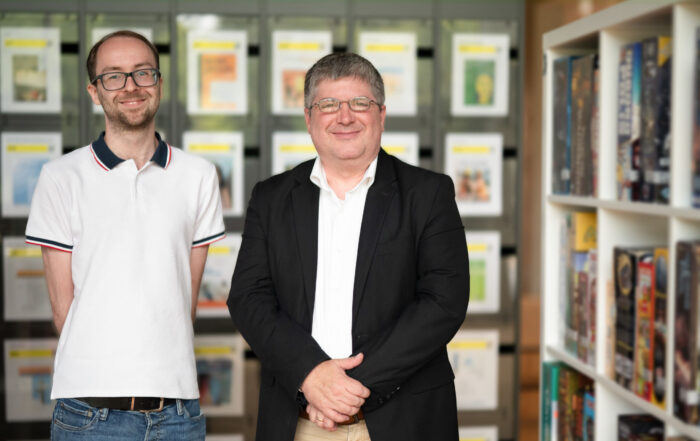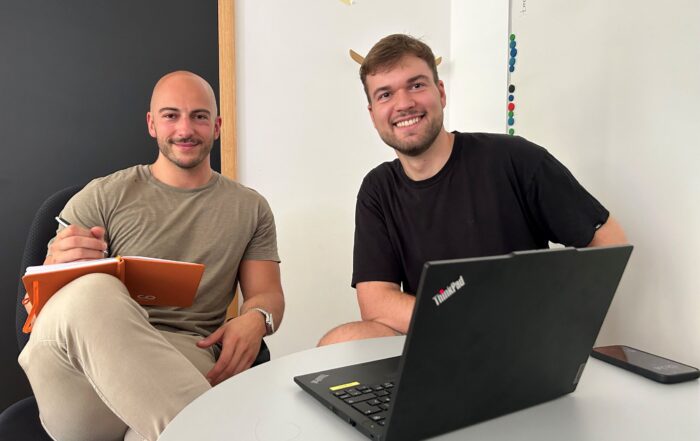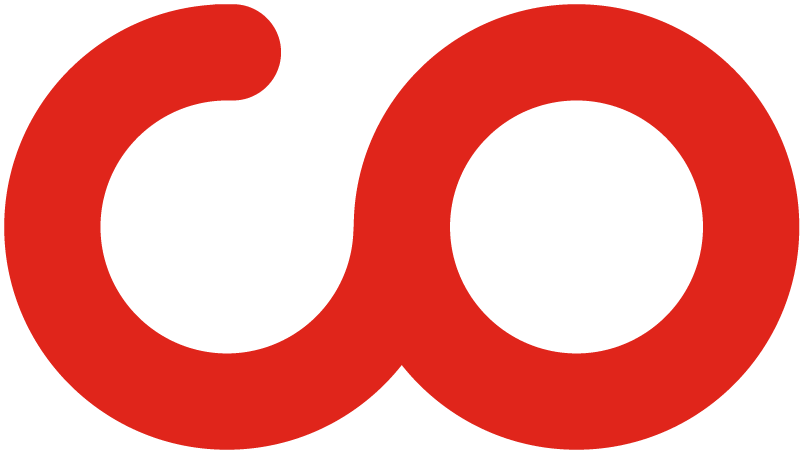10. June '24
from Cindy Dötschel
The “C-24e Colocolo” is the first electrically powered racing car developed by students from the CAT-Racing motorsport team.
This milestone was only possible thanks to close collaboration with Coburg University of Applied Sciences and external partners. The high-voltage battery developed in-house weighs around 80 kilos and is installed in Coburg’s first electric racing car, the “C-24e Colocolo”.
This only works because of the high performance of the battery.
“The battery has a maximum voltage of 571.2 V. The maximum output is 86 kW and the maximum energy content is a powerful 8.6 kWh,” said Leon Wildgans, Technical Director of the Coburger Automobile Team-Racing(CAT-Racing) project, enthusiastically after the unveiling of the new “C-24e Colocolo” racing car.
86 kW is the equivalent of 116 hp.
As every year, the new car is named after a species of wild cat.
The Colocolo lives in Chile. Switch to electric motors CAT-Racing, the Formula Student Team at Coburg University of Applied Sciences, was founded in 2007.
Since then, 15 racing cars with combustion engines have been built.
“We have worked tirelessly to make the switch from the combustion engine to an electric powertrain. Fortunately, we didn’t have to face the challenge alone because we could always count on the support of our sponsors as well as our university,” said team leader Heidi Daouk.
A project like CAT-Racing would enable the team, which is made up of 50 students from all disciplines at Coburg University of Applied Sciences, to grow beyond the lecture hall.
“We are glad that we are being given the opportunity to move with the spirit of the times in the industry and venture into new technologies.” Sponsors as the engine of the CAT-Racing vision As Heidi Daouk emphasized, a unique project like CAT-Racing is only possible thanks to various collaborations.
“The sponsors are the driving force behind our vision. Thanks to their involvement in the project, we are able to surpass ourselves every year and focus on building a race car.”
Bernd Kaufer, Plant Manager of the Coburg site, spoke on behalf of the main sponsor Brose: “The presentation of the first electrically powered vehicle marks the beginning of a new era. CAT-Racing is breaking new innovative ground with this project – and I am confident that the team will continue its success story with this vehicle,” he said.
Through Formula Student, and in particular through the CAT-Racing project, students and representatives of the university come together with the regional economy time and time again.
“We all share a passion, namely enthusiasm for automotive innovations. The joint success stories make us proud.” Support from the universityProf.Dr. Matthias Geuß, Head of the Bachelor of Automotive Technology course at the Faculty of Mechanical and Automotive Engineering at Coburg University of Applied Sciences and Faculty Advisor to CAT-Racing, described the switch to the electric motor as a “milestone” in the history of the CAT-Racing team.
Especially in view of the fact that the constantly optimized combustion engines have led to repeated successes and the team was high up in the world rankings for a while.
“It is a courageous step to leave the successes behind, to make a fresh start and now compete with the established electric car teams,” said the scientist.
The switch was accompanied by many challenges. The team organization had to be restructured in order to integrate new skills in the high-voltage area.
New safety precautions and structural measures, such as the construction of a high-voltage container for safe working on the battery, also had to be implemented.
University President Prof. Dr. Stefan Gast himself was a Faculty Advisor at CAT-Racing for ten years and is still a fan of the project.
“The student initiative makes a significant contribution to increasing the visibility of the university in the region and internationally,” he said and assured the project of continued full support from the university management.


